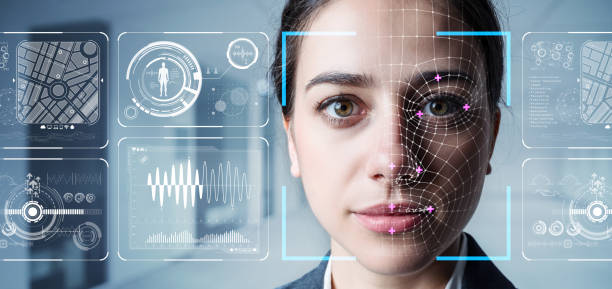Face Recognition has quickly developed from a specialty application to a basic part of present-day security frameworks. Characterized as the robotized ID or check of people given their facial highlights, this innovation has tracked down applications in different fields, including policing, and individual gadgets. The excursion started during the 1960s with fundamental calculations that could recognize faces in pictures. However, it has since advanced essentially, powered by progressions in man-made brainpower (man-made intelligence) and AI.
Today, face recognition frameworks are equipped to dissect and coordinate appearances with noteworthy exactness. Making them significant in circumstances requiring improved safety efforts. As the innovation turns out to be progressively open and reasonable, its combination with regular day-to-day existence brings up significant issues about protection, morals, and public security. This article dives into how Face Recognition functions, and its applications. The harmony between security and protection, the job of computer-based intelligence, and the administrative scene are forming its future.
How Face Recognition Works: The Science Behind the Technology
Face recognition depends on a perplexing transaction of calculations and information-handling strategies. The cycle regularly starts with picture catch, where cameras record facial pictures continuously. When a picture is caught, the framework distinguishes key facial elements — like the distance between the eyes. The state of the nose, and the forms of the facial structure — utilizing a technique called highlight extraction.
The separated highlights are then changed over into an interesting numerical portrayal, frequently alluded to as a “faceprint.” This faceprint is looked at against an information base of put-away faceprints to decide a match. There are different philosophies utilized in this cycle, including 2D acknowledgment. Which dissects facial elements in level pictures, and 3D acknowledgment, which catches profundity and forms. Further developing precision in changing lighting and points.
You can also read about React Development Should Be Your Go.
Applications of Face Recognition in Security
Face Recognition is changing security rehearses across different areas. One of its most conspicuous applications is in policing, it supports recognizing crooks, finding missing people, and upgrading observation abilities. Police divisions overall are progressively utilizing Face Recognition Frameworks to contrast pictures from crime locations. And data sets of known wrongdoers, prompting quicker distinguishing proof and fear of suspects.
In terms of open well-being, air terminals, and transportation center points have taken on face recognition for travelers, distinguishing proof, and security screenings. This innovation smoothes out the loading-up process, diminishes stand-by times, and improves general security by recognizing people on watchlists. Besides, settings, for example, arenas and show lobbies are using Face Recognition to screen swarms and recognize expected dangers progressively.
Impact on Privacy: Balancing Safety and Surveillance
The ascent of Face Recognition has lighted huge discussion over the harmony between upgraded security and the expected disintegration of protection. On one hand, defenders contend that Face Recognition is an incredible asset for forestalling wrongdoing and guaranteeing public security. The capacity to distinguish people continuously can prevent crime and help to police keep everything under control.
Then again, pundits express worries about the unavoidable idea of observation empowered by Face Recognition Frameworks. The innovation can prompt a general public where people are continually observed, raising feelings of dread of an “Elder sibling” situation. Occasions of unapproved reconnaissance, especially in broad daylight spaces, have started public reaction. With residents upholding more noteworthy straightforwardness and responsibility about the utilization of such innovation.
You can also read about Blockchain Technology in Healthcare.
The Role of AI and Machine Learning in Face Recognition
Customary Face Recognition frameworks depended on static calculations that could battle with varieties in lighting, points, and looks. Be that as it may, computer-based intelligence-driven methods have changed this scene by empowering frameworks to gain from huge datasets and work on them over the long run.
Profound learning, a subset of AI, has been especially compelling in propelling Face recognition capabilities. Profound brain organizations can dissect complex examples in facial pictures, considering more nuanced acknowledgment. These organizations are prepared on assorted datasets, which assists them with summing up across various socioeconomics and conditions, decreasing inclinations that might emerge from restricted preparing information.
Additionally, simulated intelligence considers the continuous handling of facial pictures, empowering quick acknowledgment in packed conditions. This ability is essential for applications in open security, where convenient ID can forestall possible dangers. Simulated intelligence calculations can likewise improve the capacity to recognize and adjust to varieties by all accounts, like changes in hairdo, beard growth, or adornments.
You can also read about Indexdjx: .Dji.
Challenges and Limitations of Face Recognition Systems
While Face Recognition offers various benefits, it isn’t without its difficulties and constraints. One huge issue is exactness; face verification works can encounter misleading upsides and negatives, prompting misidentification. Factors like unfortunate picture quality, changes in lighting, and facial impediments (like veils or caps) can affect the framework’s presentation.
Furthermore, worries about inclination have arisen. Studies have shown that specific socioeconomics, especially minorities and ladies, may encounter higher paces of misidentification. This brings up moral issues about the reasonableness and unwavering quality of Face Recognition, particularly in basic applications like policing.
Ethical Considerations and Public Perception
The execution of Face Recognition raises a few moral contemplations that should be addressed. One essential concern is the potential for abuse, where state-run administrations or associations might convey reconnaissance frameworks for purposes beyond open well-being. Like checking political contradictions or stifling individual opportunities. This dread has added to a developing question of Face Recognition among people in general.
Public discernment assumes an imperative part in molding the fate of Face Recognition frameworks. Numerous residents express worries about protection and the absence of straightforwardness in how their information is gathered and utilized.

